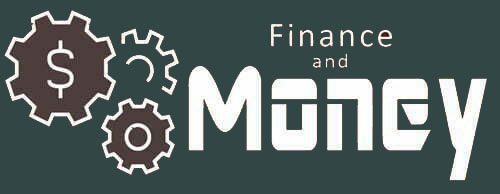On April 2, 2025, President Donald Trump stood in the White House Rose Garden and declared the beginning of what he called “Liberation Day.” His announcement marked a historic turning point in U.S. trade policy. The president revealed a plan to impose a 10 percent tariff on all imports into the United States and additional tariffs as high as 54 percent on nations that have long benefited from what Trump described as unfair trade practices.
Trump stated, “For decades, our country has been looted, pillaged, raped, and plundered by nations near and far, both friend and foe alike.” He described the new tariffs as a “declaration of economic independence” and said April 2 would go down in history as the day “America’s destiny was reclaimed.” Trump’s vision is to use these tariffs to pressure other countries into treating American goods fairly, restore U.S. manufacturing, and reverse decades of trade imbalances.
A Bold Trade Shift: 10 Percent Across the Board, More for Offenders
At the heart of Trump’s strategy is a 10 percent universal tariff that will be applied to all imported goods starting April 5. But this is only the beginning. On April 9, steeper penalties will take effect against nations Trump has labeled as trade abusers.
Among the worst offenders, China tops the list. Its goods will face an additional 34 percent tariff on top of a 20 percent levy already in place, bringing the total to 54 percent. Vietnam will be hit with a 46 percent tariff, Japan with 24 percent, and the European Union with 20 percent. Even U.S. allies such as Israel will be subject to a 17 percent tariff, despite their recent move to eliminate duties on American products.
Trump explained the logic behind these actions in plain terms. “Reciprocal. That means they do it to us, and we do it to them. Very simple. Can’t get any simpler than that.”
The president’s team is using authority under the International Emergency Economic Powers Act, a 1977 law that allows the executive branch to restrict trade in response to threats to national or economic security. Trump previously invoked this law to impose tariffs on Canada, Mexico, and China in response to illegal immigration and drug trafficking.
Targeting a Rigged Global System
Trump and his advisors argue that American trade policy has been one-sided for decades. According to White House officials, the U.S. maintains an average tariff rate of just 2 percent, while its trading partners frequently apply higher duties and impose other restrictions that block U.S. exports. In 2024, the U.S. recorded a staggering $1.2 trillion trade deficit in goods.
Officials explained that while high tariffs are a problem, the real threat comes from non-tariff barriers. These are hidden tools other countries use to restrict imports, including licensing delays, import quotas, product bans, and domestic favoritism.
A senior administration official said, “The problem with Vietnam is not their tariffs. The problem is everything else they do, including setting up shop for Communist China to send us things.” The official pointed out that China often circumvents existing tariffs by routing goods through countries like Cambodia, Indonesia, and Thailand.
Other examples cited by the administration include Australia’s ongoing ban on U.S. beef, Brazil’s licensing requirements for American agricultural goods, and Mexico’s restrictions on the volume of U.S. farm products entering the country. Israel, despite lifting its tariffs on American goods, was also accused of intellectual property theft in the pharmaceutical sector.
“These actions have undermined our national and economic security,” one White House official said. “Our farmers can have the fair treatment they deserve in other countries.”
A Shake-Up That Rattled Wall Street
While Trump insisted the plan would revive the economy and restore American strength, Wall Street reacted with shock. After the announcement, the Nasdaq Composite Index dropped by 500 points, or 2.5 percent. The S&P 500 fell nearly 90 points, or 1.5 percent. The Dow Jones Industrial Average lost 200 points. Treasury yields were mixed and the U.S. dollar index fell by 0.25 percent.
On the following day, the selloff deepened. The S&P 500 tumbled more than 4 percent, echoing declines in Europe and Asia. Japan’s markets fell by over 3 percent, while the Stoxx Europe 600 was down more than 2 percent. Oil prices also fell by 3 percent.
Economists and traders were not just surprised by the size of the tariffs but by the lack of clarity on how long they would last or whether exemptions might be offered. “Now we wait for clarity and hope we can get some on the tariff front,” said Jay Woods, chief global strategist at Freedom Capital Markets. “The lack of certainty and the shroud of secrecy have been driving the market insane.”
Diane Swonk, chief economist at KPMG, called it a “worst-case scenario.” She warned that the tariffs could raise prices and potentially tip the U.S. into recession. Others, like GlobalData’s Steven Blitz, said the move was a massive tax increase that would likely be passed on to consumers. “You don’t grow an economy with higher taxes,” Blitz said.
Still, Trump and his officials dismissed concerns. “I don’t see [a recession] at all,” Trump said during a recent White House event. “I think this country is going to boom. I think we’re going to have the greatest markets we’ve ever had.”
Trump Refuses to Surrender America’s Economic Future
Trump has made it clear that this tariff plan is about more than economics. It is about national strength. “In many cases, the friend is worse than the foe in terms of trade,” he said. To Trump, previous administrations surrendered the country’s manufacturing base to globalization, prioritizing cheap imports over American jobs. His goal is to reverse that.
“If you want your tariff rate to be zero, then you build your product right here in America,” Trump said. “Jobs and factories will come roaring back into our country, and you see it happening already.”
His supporters argue that these tariffs will encourage companies to bring their operations back home. Already, firms such as Siemens, Apple, Johnson & Johnson, Hyundai, and Taiwan Semiconductor Manufacturing Company have announced new investments in the United States. TSMC alone plans to invest at least $100 billion in chip plants in Arizona.
Commerce Secretary Howard Lutnick said these tariffs are designed to level the playing field. “Foreign goods may get a little more expensive,” he said, “but American goods are going to get cheaper, and you’re going to be helping Americans by buying American.”
Reactions Around the World: Frustration, Warnings, and Negotiations
Global leaders have responded with a mix of outrage and caution. Ursula von der Leyen, president of the European Commission, said the tariffs were a “major blow to the world economy” and promised that the EU would take united countermeasures. French President Emmanuel Macron urged European companies to pause U.S. investments until there was more clarity.
China’s foreign ministry condemned the tariffs, calling them “self-defeating bullying.” Japan’s Prime Minister Shigeru Ishiba called the move “extremely regrettable” but stopped short of threatening retaliation, stating that Japan would try to show the U.S. how it was helping American industry. British Prime Minister Keir Starmer said Trump was “acting on his mandate” and that trade talks would continue.
Some countries are choosing cooperation instead of conflict. India offered to slash tariffs on half of U.S. imports. Vietnam lowered duties on a range of American products. Israel removed all remaining tariffs on U.S. goods.
Still, Trump made it clear that no nation is completely exempt. “I may give a lot of countries breaks,” he said. “In other words, they’ve charged us so much that I’m embarrassed to charge them what they’ve charged.”
Treasury Secretary Urges Nations Not to Retaliate
Treasury Secretary Scott Bessent urged foreign governments to stay calm and avoid escalation. “My advice to every country right now is do not retaliate,” he said on Fox News. “Sit back, take it in, let’s see how it goes. Because if you retaliate, there will be escalation. If you don’t retaliate, this is the high-water mark.”
Bessent also warned that prior economic conditions were leading toward a financial crisis and said Trump’s policies were intended to correct that course. “We’re setting the stage for long-term economic growth,” he explained. “We were on our way to a financial crisis, and we are putting ourselves back onto a sound trajectory.”
Democrats Divided on the Tariffs
While most Democrats condemned the announcement, a few voiced support. Rep. Jared Golden of Maine said, “I’m pleased the president is building his tariff agenda on the foundation of a universal 10 percent tariff like the one I proposed.” He called the plan a “good start to erasing our unsustainable trade deficits” and said it should be paired with pro-worker policies that prioritize unions and American manufacturing.
Others were sharply critical. Rep. Gregory Meeks promised to introduce a resolution to end the national emergency declaration that justified the tariffs. “It’s time they show whether they support the economic pain Trump is inflicting on their constituents,” Meeks said.
A Turning Point in the Global Economy
Trump’s Liberation Day tariffs are more than just a tax on imports. They are a direct challenge to the global economic system that the United States helped build after World War II. Trump believes that system has been used against America for too long, and now he is tearing it down to build something new.
The outcome of this strategy remains uncertain. It could bring new factories and jobs back to the United States. It could also bring higher prices and global retaliation. But one thing is clear: Trump is no longer asking for fairness. He is demanding it.





